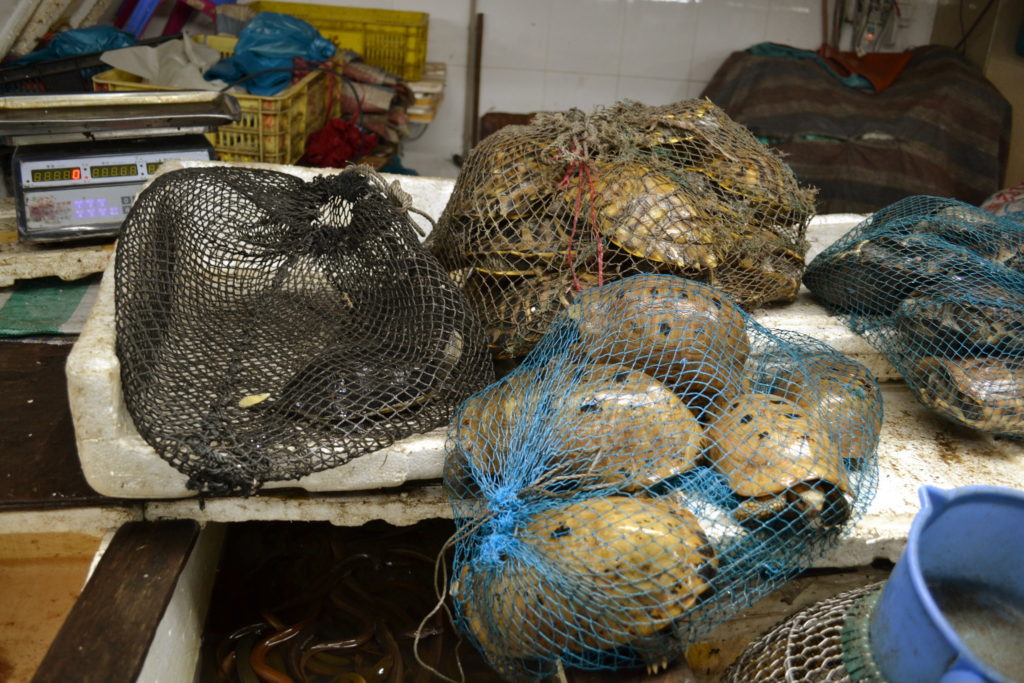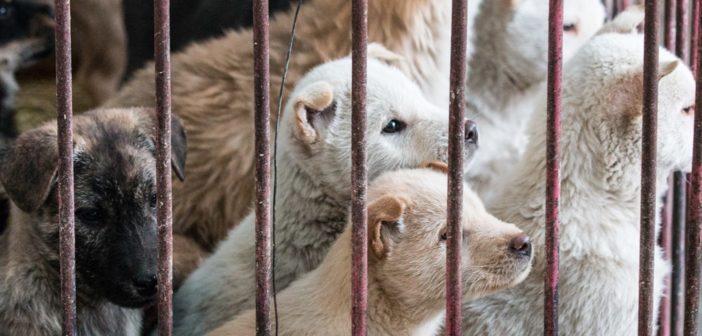The coronavirus outbreak has already spread across half a dozen nations, including Thailand, Japan, Australia, France, Canada and the United States, causing almost 500 deaths and the lockdown of at least 13 Chinese cities.
Scientist have confirmed that the disease has been transmitted from an animal, as is the case with as 70% of human pathogens. It is believed that the source of the infection was the wild animal section of the Huanan Seafood Market in Wuhan, China, which is well known for selling exotic live animals and slaughtering them on the spot. Among many others, wolf pups, scorpions, squirrels, porcupines, turtles, crocodiles, monkeys, dogs, cats and other live animals are sold for human consumption.
These type of markets are common across China, Vietnam and other areas of Southeast Asia, and are called “wet markets” because of the large quantities of water that are used to slop the floors. Sanitation standards and hygiene levels are both very poor, as wild and domesticated animals, along with their urine, feces and other bodily fluids come in contact with sales clerks and customers. This is the ideal place for contamination to occur and for viruses and bacteria to spread. It seems that the outbreak of both the avian flu and SARS (Severe Acute Respiratory Syndrome) originated in these wet markets as well.

The consumption of wild animal meat is common and considered a luxury in China, especially among the older generations. Moreover, wild and exotic animals and their parts are still used in traditional medicine to cure ailments or as aphrodisiacs. It is part of Chinese culture, and most consumers do not seem to be aware of the public health threat.
After the SARS outbreak in 2003, which killed over 750 people, there was a temporary ban on wild animal markets. It seems the Chinese government should then have learned that diseases can easily spread from animals to humans in markets where wild and domestic animals are clumped together in unhygienic conditions, but the ban was withdrawn. With the escalation of the coronavirus outbreak, China has again banned the transport and sale of wild animals, prohibiting trading to markets, supermarkets, restaurants and online platforms. Unfortunately, the ban will only be in force until the epidemic is eliminated across the country, after which wildlife trade will presumably be allowed again, as it was after the SARS crisis.
This is a vicious cycle. A permanent ban on the sale of wildlife, in China and in other countries, is necessary to reduce the risk of new viruses emerging, which may potentially be even more dangerous than the past ones.

To date, there are very few laws in China that protect animals from abuse and mistreatment, although there is growing awareness regarding the concepts of animal welfare in some contexts, such as in research and zoos. Livestock farming has increased in recent years and China is now one of the world’s main producers of animal products for consumption, but there are no requirements for humane slaughter. Half of the global pig population and over 60% of farmed fish come from this country. About 10,000 Asiatic black bears are kept it tiny cages for bile production and many other animals, including endangered species, are exploited so their parts can be used for traditional medicine. China is also the biggest producer of fur, which is sourced through shocking farming and skinning practices.
Animal cruelty is not a punishable offense in China, and the large-scale exploitation of animals also threatens both human health and ecosystems. The political establishment does not seem interested in protecting animals, but hopefully with the growing number of activists, especially young people, along with increasing knowledge about health hazards, there will be more consideration regarding animal welfare in the near future.
Featured image: puppies for sale at a Chinese market. Image credit Carsten ten Brink, CC BY-SA 2.0.





